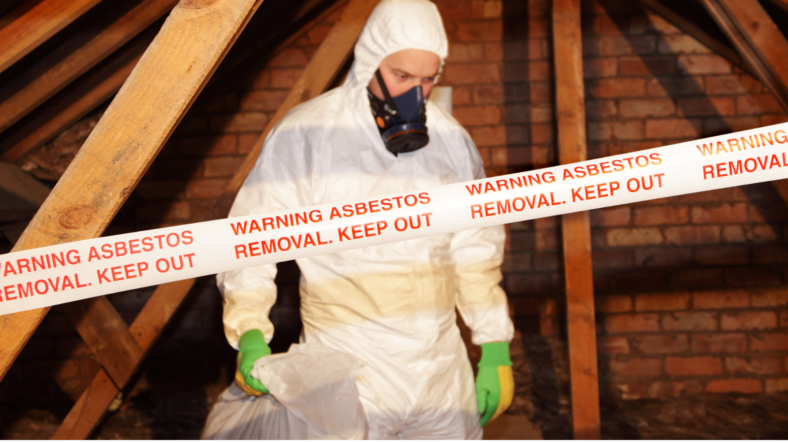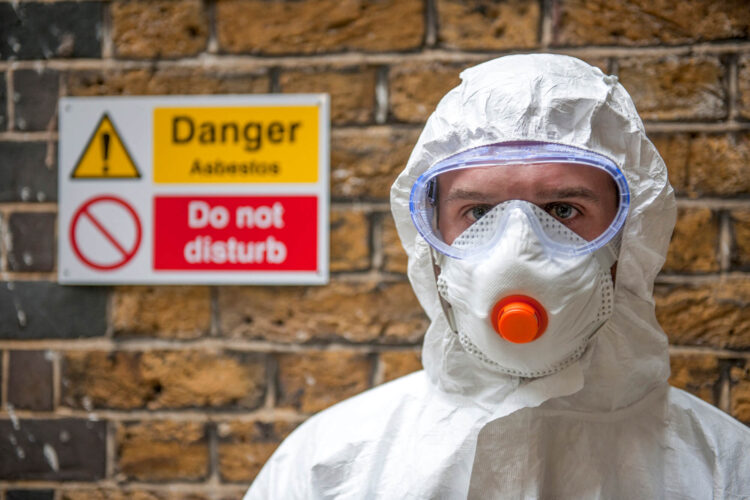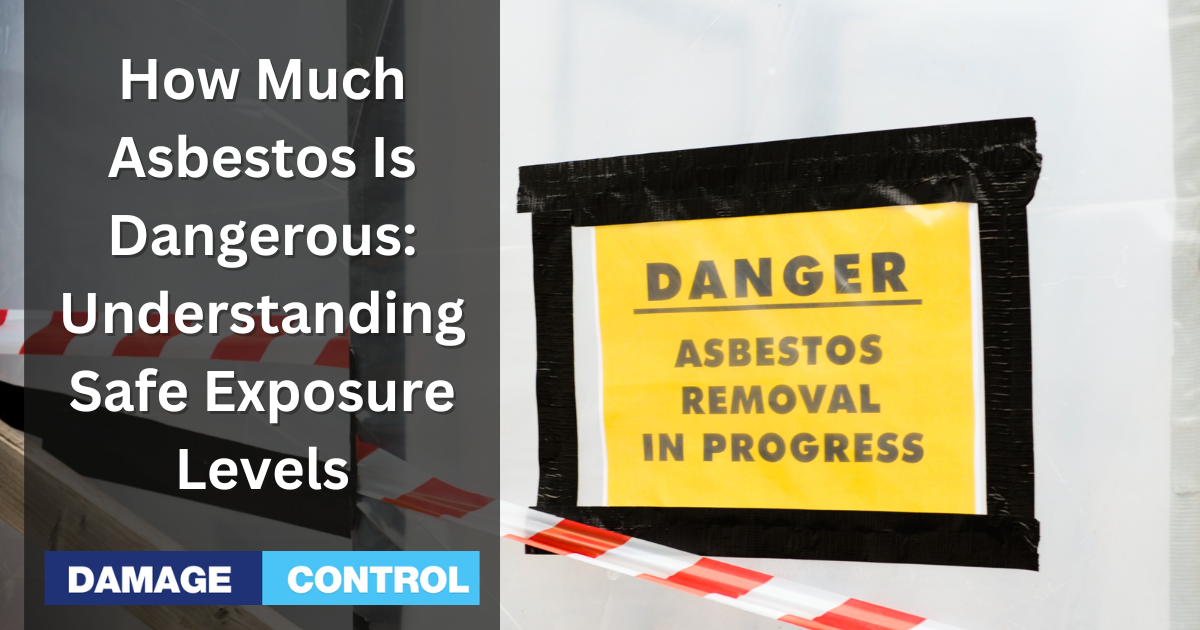Asbestos! Sounds complex, right? It's actually a mineral. Nature created it, and we used to love it. Builders and manufacturers fancied it for its superpower: resisting heat. But things changed.
Here's the plot twist: asbestos has a dark side. Those tiny fibers, when inhaled, could make you sick. They might cause some nasty health problems. These include lung cancer, mesothelioma, and asbestosis. Quite serious, aren't they?
The danger level? It depends. A few factors weigh in. These are exposure duration and frequency, type of asbestos fibers, and your own disease susceptibility. Imagine those fibers lodged in your lungs. They trigger inflammation, scarring, and respiratory damage. Sounds tough, but it's manageable.
Remember there's no so-called “safe level” of asbestos exposure. But, don't fret. Greater exposure brings higher risks. So, it's crucial to stay careful around asbestos-laden materials. Seek medical help if you think you've had an encounter with asbestos. It's not about the fear, it's about understanding the risks. It's about minimizing those risks. Above all, it's about embracing a healthier, safer lifestyle.
Asbestos Exposure Limits

Do you work with asbestos-containing materials? That's a significant concern. Why? It's about asbestos exposure. This exposure plays a big role in whether you'll develop an asbestos-related disease. But, there's a safety net: exposure limits.
OSHA: Your Safety Guardian
Who sets these limits? The Occupational Safety and Health Administration (OSHA). They're your go-to for safety standards. Here's the deal: they've established a permissible exposure limit (PEL). The PEL is 0.1 fiber per cubic centimeter of air over an eight-hour workday. Think of it as an average. It ensures your exposure won't exceed this limit in a typical workday.
The Excursion Limit: Another Layer of Protection
There's more to the story. OSHA also sets an excursion limit (EL). This one has 1.0 asbestos fiber per cubic centimeter over 30 minutes. It's a golden rule. You shouldn't be exposed to more than this amount at any point during a half-hour stretch.
Remember, these safety limits are there for a reason. They aim to safeguard your health while you're in the line of duty.
It is important to note that there is no “safe” level of asbestos exposure for any type of asbestos fiber. Every occupational asbestos exposure can cause injury or disease, and every occupational asbestos exposure contributes to the risk of getting an asbestos-related disease.
When it comes to asbestos, bosses have a crucial role. They're the ones providing personal protective equipment (PPE). This gear includes respirators and protective clothing. It's not optional; it's a must when handling asbestos materials.
Regulations and Training: The Pathway to Safety
There's more. Employers need to set up regulated zones. These areas are where asbestos work happens. Along with this, there's training. Workers should be educated about the perils of asbestos exposure. Remember, knowledge is power.
The EPA: Another Watchdog in the Game
OSHA isn't alone in this fight. The Environmental Protection Agency (EPA) is also in the mix. They've set a maximum contaminant level (MCL). This limit is 7 million fibers per liter for asbestos in drinking water. And, they're watching out for our environment. The EPA regulates the disposal of asbestos materials, stopping those tiny fibers from escaping into the wild.
The Dangers of Asbestos Exposure
Asbestos is a naturally occurring mineral widely used in construction materials until the 1970s. Exposure to asbestos fibers can cause serious health problems, including lung cancer, mesothelioma, and asbestosis. This section will discuss the dangers of asbestos exposure and how to protect yourself from this harmful substance.
Those tiny asbestos fibers sure can sneak up on you. They're so small you can accidentally breathe or swallow them. Once inside, they take root in your lungs or other organs. That's when the damage starts. But remember, getting an asbestos-related disease depends on exposure amount, duration, and other factors such as things like smoking and age.
The Diseases: Lung Cancer and Mesothelioma
What can exposure lead to? One word: lung cancer. Asbestos damages lung tissue, leading to cancerous cells. Then there's mesothelioma, another disease linked to asbestos. It strikes at the lining of your lungs, abdomen, or heart. And yes, it can be fatal.
Unmasking Asbestosis
Here's another one: asbestosis. It's a chronic lung condition caused by breathing in asbestos. Symptoms? Shortness of breath, coughing, chest pain. But here's the thing: asbestosis often plays hide and seek. It might take years to show up and can be hard to diagnose.
Protective Measures Against Asbestos
Are you fighting asbestos risks? Start with caution. Handle asbestos-laden materials carefully. Use appropriate clothing and respirators, and ensure good ventilation. Safe practices are your friend.
The Importance of Inspection and Professional Removal
Do you have suspicions about asbestos in your place of living or work? It's inspection time. Remember, when it comes to removal, let the experts take charge. DIY could mean freeing those fibers into your airspace, which spikes your exposure risk.
What Factors Affect Asbestos Risk?
Asbestos exposure is a serious health concern, and the risk of developing asbestos-related diseases depends on several factors. Here are some of the most significant factors that affect asbestos risk:
The more time you spend around asbestos and the more intense the contact, the higher your chances of getting an asbestos-related illness. Folks with long careers around asbestos, like miners, builders, and ship constructors, face greater risks than those with short or infrequent encounters.
Type of Asbestos
In the world of asbestos, there's a range of types. Each one varies in danger levels. Take Chrysotile asbestos, for example, often called white asbestos. It's the most widespread type, and it's not as harmful as its counterparts. But don't let your guard down. Every type of asbestos has the potential to affect your health. So, while some may pose a lesser threat, vigilance is crucial in all cases.
Fiber Size and Shape
Asbestos fibers are truly minuscule, so it's a breeze for them to enter your lungs. The dimensions and form of these fibers play a big role. They dictate how far they can venture into your lungs and the duration of their stay. The lengthier their visit, the higher your odds of facing an asbestos-related disease. So, it's not just the presence of asbestos that matters, but its size, shape, and lingering period, too.
Smoking
Pair smoking with asbestos exposure, and you've got a risky mix for lung cancer. For those who light up and have been around asbestos, lung cancer's danger jumps significantly. They face a much greater threat compared to non-smokers or those who haven't been exposed to asbestos. Considering health risks is crucial to consider lifestyle habits and environmental factors.
Age and Health Status
When it comes to asbestos risks, age and health status matter; older folks, or those grappling with existing lung or breathing issues, face a steeper climb. Asbestos can also act as an immune system bully, making it tougher for your body to ward off infections and diseases.
Other Factors
Then, other variables can sway the asbestos risk. Your genetic blueprint, gender, and the environment you're in can make a difference. Some individuals may find themselves more prone to asbestos-related diseases due to these factors. So, it's about exposure and who and where you are.
Asbestos-Related Diseases
If you're exposed to asbestos, you might face serious conditions like asbestosis, lung cancer, or mesothelioma. What happens? You breathe in asbestos fibers. They make themselves at home in your lungs, causing slow damage.
Asbestosis is a lung condition caused by asbestos. It scars the lungs. Symptoms are breath shortness, coughing, and chest pain. The risk goes up with more exposure.
Then there's lung cancer. It can take years or even decades to show up after asbestos exposure. If you smoke, this risk shoots up even more.
Let's not forget mesothelioma. This rare, aggressive cancer affects the lining of your lungs, abdomen, or heart. Its main cause? Asbestos exposure. Chest and abdominal pain and shortness of breath are common symptoms.
Asbestos exposure might also increase your risk for other cancers like ovarian and laryngeal. But remember, not everyone who meets asbestos will get these diseases. However, the risk does go up with more exposure. Sometimes, symptoms might not show up until decades later.
If you think you've been exposed to asbestos, talk to your doctor. Get regular check-ups. Early detection can make these diseases easier to treat.
How to Prevent Asbestos Exposure

Facing asbestos can be a real health threat. It can lead to lung cancer, mesothelioma, and other breathing issues. That's why it's super important to dodge this dangerous mineral. Prevention is key!
One of the best ways to prevent asbestos exposure is to identify and remove any asbestos-containing materials in your home or workplace. If you suspect your building contains asbestos, hire a professional asbestos abatement contractor to inspect and remove it safely.
Got a job in an industry that uses asbestos? Suit up with protective gear. Think respirators and disposable coveralls.
Here are some more tips to dodge asbestos exposure:
- Disturbing asbestos-laden materials? Not a good idea. Insulation, tiles, roofing – leave them alone. You don't want to send asbestos fibers airborne.
- Sweeping or vacuuming asbestos debris? Nope. You'll kick up fibers into the air. What to do instead? Wet the area and clean up the debris with a damp cloth.
- If you're a smoker, it's time to quit. Smoking increases your risk of lung cancer and other breathing issues, especially around asbestos.
- Think you've been exposed to asbestos? Go straight to your doctor. Tell them about your exposure history.
By doing these, you can cut down your risk of asbestos-related diseases. Keep your health in good shape. Remember, it's better to prevent than to treat, so take steps today to protect yourself and your loved ones from asbestos. Be safe, be smart!
Conclusion
Even minimal asbestos exposure carries risk, but understanding safe levels is key. By knowing the signs, staying vigilant, and adhering to professional advice, you can greatly reduce your risk and maintain good health. Our company is a professional restoration and abatement company that offers specialized mineral testing in Florida.

